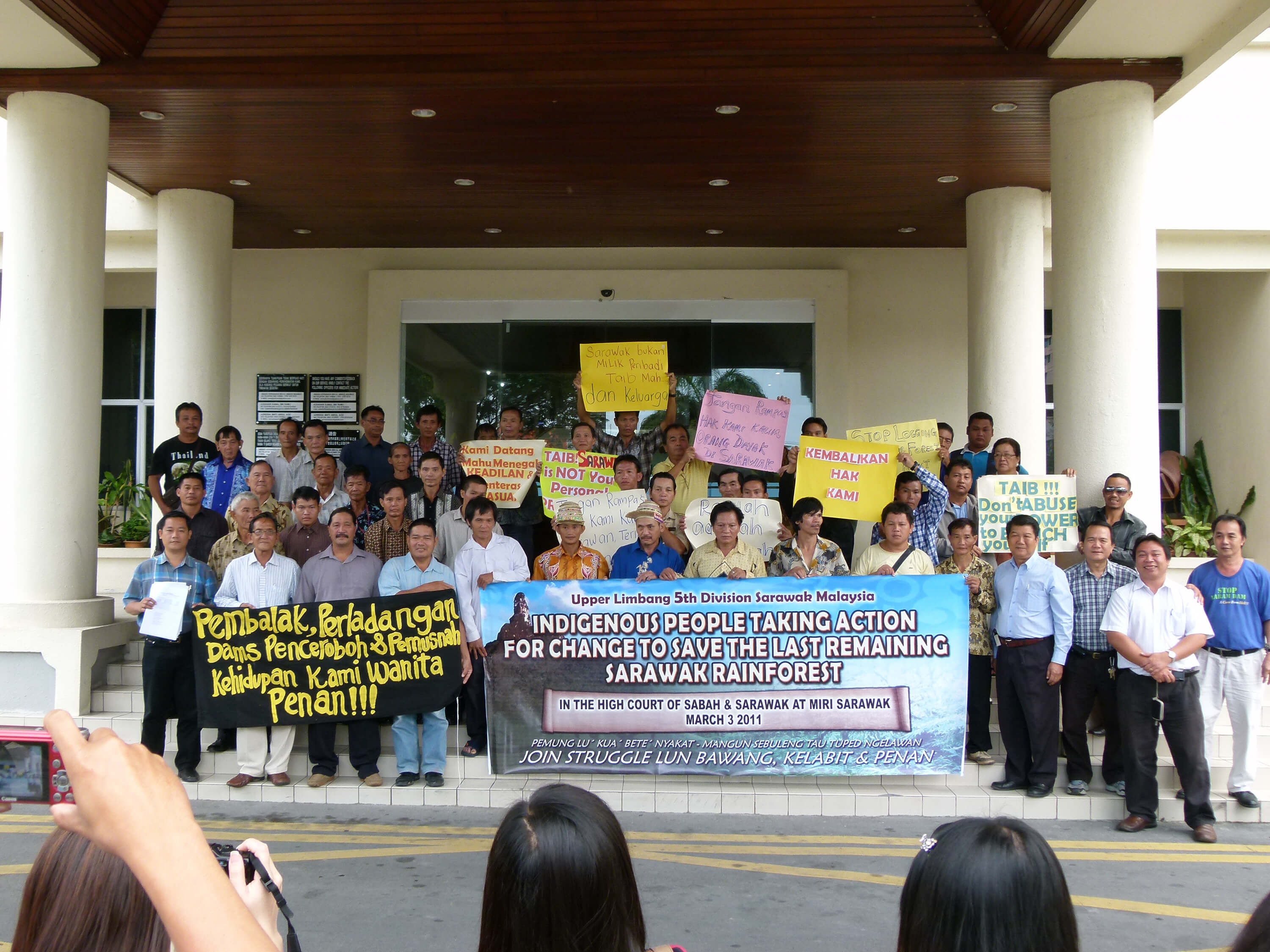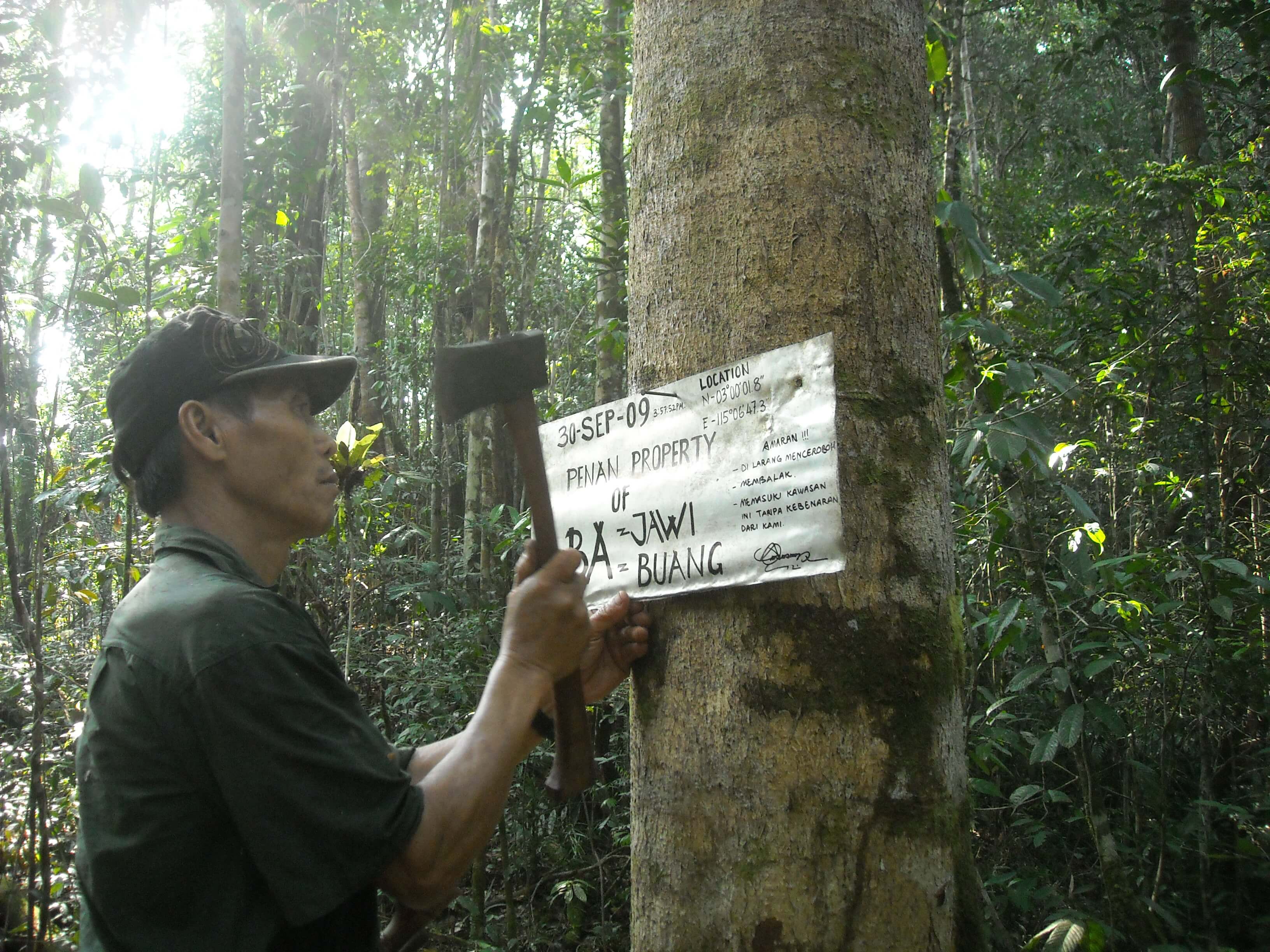Indigenous land rights
One of the ways in which the Penan are attempting to halt the rapidly advancing removal of their rainforests is through court action. The Bruno Manser Fund is helping them file successful land-rights claims by ensuring that they are assisted by qualified lawyers. It also provides general support to the Penan communities by accompanying them throughout the drawn-out legal proceedings.
Historic background
Indigenous groups feel very close ties with the rainforest and the land they live on. For them, their territory binds them with their history and their ancestors. Spirituality and identity are strongly linked with ancestral land. This relationship is particularly strong amongst the Penan as a people who have traditionally led a nomadic way of life.
The destruction of the rainforest through logging, the creation of plantations and the realisation of huge dam projects sever these ties between the Penan and their environment. They are thus not only deprived of their livelihood but also of their history, culture and identity.
For many years now, the Penan have been attempting to defend their land and their forest by means of blockades and petitions addressed to the head of the Sarawak government, Taib Mahmud. They have called on him to recognise their native customary rights. The government has, however, continued to grant concessions for logging and licences for the creation of oil-palm plantations.
Legal background
Since the end of the 1990s, many Penan communities have decided to sue for their land rights before the courts. According to Malaysian law, indigenous peoples claiming land rights are required to produce evidence that they were already using the territory concerned before 1958. They have to submit maps to document the land they have used and the limits of their territories. That is not an easy task for a culture that has left virtually no written trace.
Support from the Bruno Manser Fund
The Bruno Manser Fund provides support for filing these land-rights cases before the courts through local lawyers. It also assists in performing the necessary research and compiling the evidence. Preparation of a land-rights claim involves collating the evidence of the Penan’s presence in the forest for many centuries and producing maps of their territories. The Bruno Manser Fund’s mapping project is helping do that.
Back in 1998, four villages submitted the first case to the courts in cooperation with the Bruno Manser Fund. Five further land-rights cases have been filed since then. The six pending cases cover a total area of more than 3600 square kilometres.
The developments of recent years give the Penan grounds to hope that the courts will decide in their favour. In a case that set a precedent in 2001 one Sarawak court ruled that it was possible for indigenous land rights to cover not only areas used for farming but parts of the primeval forest too. Then in 2011, the Baru Bian legal practice, which is specialised in land rights, succeeded for the first time in persuading a Sarawak court to grant legal recognition to native customary rights (NCRs) to land.








